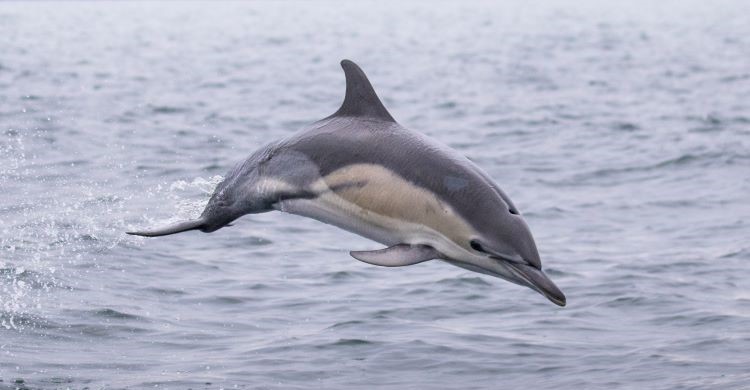Conservation Objective Workshops

Common dolphin by Josh Wilson of AK Wildlife Cruises Falmouth | @oshuwilson
The ASCOBANS Secretariat held two workshops in April and May 2023, with the following objectives:
- Review the appropriateness of current ASCOBANS conservation objectives. The general aim is to minimize (i.e. ultimately to reduce to zero) anthropogenic removals (i.e. mortality), and in the short term, to restore and/or maintain biological or management units to/at 80 per cent or more of the carrying capacity.
- Evaluate the ASCOBANS Intermediate precautionary aim to reduce bycatch to less than 1 per cent of the best available population estimate, and that a total anthropogenic removal above 1.7 per cent of the best available estimate of abundance should be considered unacceptable in the case of the harbour porpoise. If available evidence suggests that a population is severely reduced, or in the case of species other than the harbour porpoise, or where there is significant uncertainty in parameters such as population size or bycatch levels, then “unacceptable interaction” may involve an anthropogenic removal of much less than 1.7 per cent.
- Evaluate a Management Framework Procedure.
The workshops agreed that the general aim of the ASCOBANS conservation objective remained appropriate, i.e. ‘to minimize (i.e. ultimately to reduce to zero) anthropogenic removals (i.e. mortality)’ over an unspecified timeframe. It was also agreed that the ASCOBANS subobjective ‘to restore and/or maintain biological or management units to/at 80% or more of their carrying capacity’ remained appropriate.
It was further agreed that the fixed percentages of 1% and 1.7% of the best available population estimate, for the ‘intermediate precautionary level’ and ‘unacceptable interactions’, respectively, were inappropriate. They would not achieve the desired outcome either when applied to the harbour porpoise or for other species.
The Potential Biological Removal (PBR) approach was recommended for general use, but modified from what is used in the United States since the ASCOBANS conservation subobjective is to restore and/or maintain biological or management units to/at 80 per cent or more of the carrying capacity which is a higher ambition than in the United States where it is 50% or more of the carrying capacity. The ASCOBANS sub-objective was a policy decision, whose implementation requires a quantitative interpretation such as that used by the OSPAR OMMEG. We propose that the maximum time horizon for achieving the sub-objective should be 20-100 years with a minimum probability of achievement of 80-95%, across a suitably wide range of likely scenarios. For populations or management units which are currently at such an unfavourable conservation status that a population level of 80% of carrying capacity is not achievable within the specified time horizon, the Recovery Factor (as applied in the modified PBR) should be set to the minimum value of 0.1.
The Chair of the workshops recommended that the higher probability for achieving the stated sub-objective be employed at least for those management units in an unfavourable status, but that further work be undertaken in consultation with policy advisors to confirm the suitability of both the above ranges with a view to narrowing them where possible. The work may also involve refining the definition of the term ‘carrying capacity’ in the sub-objective.
In any case, it was recommended that population / management unit responses are modelled over a 100-year time window in order to understand the long-term implications of current management of anthropogenic activities (assuming, if necessary, that environmental conditions do not change, if more realistic scenarios are not readily available).
Alternative formulae, such as an RLA (Removals Limit Algorithm), can be used to determine removal limits if the required data are available, provided that they meet the above conservation goals (80% of carrying capacity with the specified probability and time horizon) in simulation trials and show superior performance to the PBR-based approach.
Twenty-two experts attended the Part 1 workshop in April 2023, and 35 people the Part 2 workshop in May 2023. The reports will be made available in due course in the respective workshop pages: Part 1 workshop & Part 2 workshop.
Last updated on 09 December 2023


